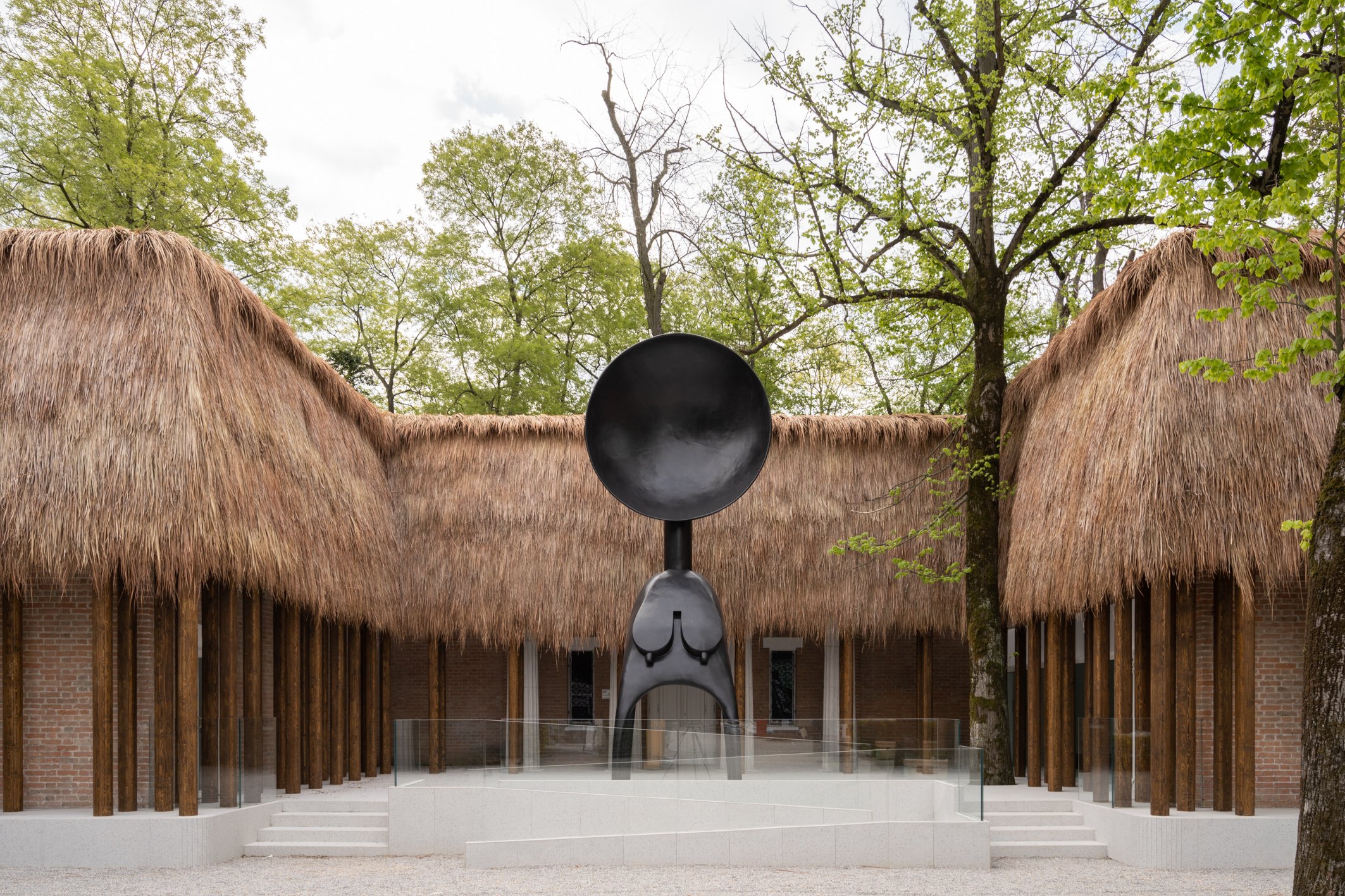THE 59th BIENNALE OF ART IN VENICE – Metamorphosis, Sovereignty and Dreams
Visiting the Biennale of Art in Venice is in itself an experience of wonder, as much as visiting Venice: ever-changing and yet floating in stillness, surprising, and splendid even in its most secluded corners —especially so the more you tread off the beaten path. Wherever you turn your gaze, the city offers glimpses of enchanting scenery, everlasting and lingering for a long time, even once you get back home.
This year, like in the past editions, Venice became my destination for three days, and not only for what I’ve described above but for a full immersion in its 59th Biennale of Art, named by Cecilia Alemani – this Biennale’s Artistic Director - The Milk of Dreams.
The Milk of Dreams is the title of a book by Leonora Carrington (1917–2011), a Surrealist artist. In it, she describes a magical world where life is constantly seen and reinvented through the prism of imagination. In this reality, everything becomes possible and people can reinvent themselves, changing bodies and abandoning whatever is considered ‘human’.
And indeed, this year’s Biennale fully reflected the three main themes, as Alemani describes them: “the representation of bodies and their metamorphoses; the relationship between individuals and technologies; the connection between bodies and the Earth“.
In walking around the greenery of the Giardini, where the pavilions of different countries are located, and then through the long building of the Arsenale – which always amazes me with its choreographic artworks – I felt like entering a dream: I found the connections and witnessed the metamorphoses.
Together with my two good travel companions Laura and Stefania, I ambled around Venice before entering the grounds of the Biennale and we stumbled upon collateral events and exhibitions held in other charming spaces. Some were welcome additions to the already interesting exploration of the city in the less crowded but absolutely fascinating area of Castello, located between Giardini and Arsenale, where we rented our apartment.
During our meanderings through the narrow ‘callette’ (small lanes), we entered the space dedicated to Lita Albuquerque’s Liquid light, where we watched the multi-screen movie that bears the same name, shot at the Salar de Uyuni Salt Flats in Bolivia and at Titicaca Lake, and with her daughter Jasmine as a dancer and main protagonist.
The allegory of the theme is about Elyseria, a 25th-century female astronaut – a fictional character invented by the artist – who has the mission to teach men about the stars and their related fields of astronomy and navigation. Elyseria has been following the artist in the numerous installations that she has created in extreme landscapes around the world, carrying the message that we live in a time between the material and the sacred.
The exhibition space is also decorated by glass spheres made in Venice, reflecting the golden pigments they sit on, and installations along the theme of the sphere. The whole environment feels otherworldly.
Liquid Light ⓒ Lita Albuquerque
The inaugural Nepalese Pavilion called Tales of muted spirits – Dispersed threads – Twisted Shangri-la, is also hosted inside a gallery space outside the main Biennale. I was pleasantly surprised in finding out that Tsherin Sherpa is the main artist representing Nepal. I had the occasion to see an exhibition dedicated to him at the Rossi & Rossi Gallery in Hong Kong, and it was quite eye-opening.
The theme of this pavilion is about the ancestors of the Sherpa people, their deities and the role they play in society. But it is also about carpet weaving as an art that has turned into a form of exploitation and has to compete with the ready-made industry that caters to foreign demand. Not to mention the impact of the western quest for Shangri-la, and the big business flourishing around it, in a country that has seen displacement, loss, and witnessed earthquakes and natural calamities. A very stunning bronze sculpture with intertwined arms, legs, hands and feet, and with snakes travelling around them, called Muted expressions (cover, Ed.) took up the central space.
A noteworthy detail is that this year’s Biennale of Art has seen a large participation of women artists and also of artists coming from ethnic minorities who finally wish to claim their place in the world, their ‘sovereignty’, like the Roma people, represented at the Polish Pavillion in Re-enchanting the world, by Roma artist Małgorzata Mirga-Tas.
Her artwork is a huge hand-stitched tapestry covering the entire four walls of the pavillion with twelve, two-story high, fabric panels. It alludes to the famous Hall of the months fresco series from the Renaissance Palazzo Schifanoia in Ferrara, Italy, and it is based on the months of the calendar. It represents the journey of the Roma, the largest European minority, across centuries and countries. We were particularly struck not only by the fine workmanship involved, but also by the vibrancy of colours and the richness of details.
Re-enchanting world ⓒ Małgorzata Mirga-Tas
Another minority represented at the Nordic Countries Pavillion, a very bright and airy space where wood dominates, is the Sámi people. In fact, this year, the pavilion was renamed Sámi Pavilion in representation of Sápmi, the Sámi homeland of the involved artists, Pauliina Feodoroff, Máret Ánne Sara and Anders Sunna. The experience catches all senses through painting, sound, sculpture, smell, and performance. Even here, the highlight is the imbalance of colonial power relations across Scandinavia and the Kola Peninsula, where Sámi people are forced to give up the bonds of kinship with land and waters that are essential in their lives. With their works, the artists propose ways of healing and restoring Sámi’s worldviews today.
The exhibition at the Estonia Pavilion is called Orchidelirium. Having lived in Singapore for almost seven years and having extensively travelled around South East Asia, the setting felt somehow familiar. The artists Kristina Norman and Bita Razavi centered their theme on the life and work of Emilie Rosalie Saal, a colonial artist specialising in drawing and painting tropical flora. While being surrounded by all sorts of amazing orchids in South-East Asia, have I ever reflected on the obsession for orchids of the colonial-time collectors? Was this form of botanical exploitation different from other forms of abuse of power carried out by the colonisers?
This is what I love about Biennale: the lens through which we look at works of art and reflect on their meanings is never the conventional one.
And non-conventional, for sure is the USA Pavillion, where its Palladian-style façade gained some ‘re-styling’ and a thatch roofing, resembling now a West African palace in the 30s, thanks to Simone Leigh’s exhibition, called Sovereignty. Leigh is the first black American woman to be represented at the Venice Biennale of Art. Her sculptures are monumental and striking, and they challenge the colonial narrative about blackness and the female body. I appreciated the rediscovery of African ritual objects for their original spiritual roles, and not as artistic relics to be kept by the collectors. This was one of my favourite pavilions.
The USA Pavilion
Talking about metamorphosis and transformation, another pavilion that this year was changed – and in fact partly ‘demolished’ – to recreate the one built in 1909, is the German Pavilion. The German Pavilion was redesigned in 1938 to reflect fascist aesthetics, and it remained quite the same until now. In Relocating a structure the artist, Maria Eichhorn, uncovers traces of the original pavilion that remained hidden after its 1938 redesign. Part of this project, are also city tours to places of remembrance and resistance, performances and a rich catalogue.
As we kept walking the lush grounds of Giardini, we heard a very evocative female voice speaking in an unknown language. We followed its soothing sound and found Queendom, at the Israeli Pavilion, another example of art seen from a woman’s perspective.
We couldn’t figure out, at first, what Ilit Azoulay’s bright artworks represented. And then we understood that they were digital craftwork made through panoramic photomontage of artifacts, in particular vessels of Islamic art that arrived in Europe and were displayed in Western museums. The artist scanned, zoomed, and recreated archival photographs of these objects, making them available, and sharing them with the world, so that they could belong to us all.
On our way to the Arsenale, we visited the Hong Kong Pavilion, fittingly named Angela Su: Arise, Hong Kong in Venice. The theme and big metaphor – and one can read more in it, taking into account what the city has been going through in the last three years – is the act of ‘levitation’, which develops through a pseudo-documentary, drawings, hair-embroideries and installations. The centrepiece is Laden Raven, a 3-meter-wide embroidery of a human baby resting inside the great bird’s womb. The exhibition is quite ‘dark’, with black as its dominating colour, but very outstanding. I particularly appreciated Angela Su’s meticulously-made embroideries.
Angela Su, The Magnificent Levitation Act of Lauren O, 2022.
The Arsenale area, as always, offers an array of great installations and artworks. The visitors flow naturally from one room to the next, following the tale of co-existence between man, nature and technology, already seen in the South Korean Pavilion, named Gyre (also this time very innovative, and futuristic), and well represented in the Italian (History of night and destiny of comets) and Chinese Pavilions (Meta-Scape). But, despite the highs and lows of technology and the difficult relationship it has with us, we should never forget about dreams, where we come from, and what ‘home’ represents for us.
I have seen many other noteworthy pavilions and artworks, and I could go on writing at length. But I’d like to conclude my round-up of Biennale experience with the pavilion that, in my opinion, bears the most intriguing name: Selling water by the river, the Latvian Pavillion by Skuja Braden, an international artistic collaboration between Ingūna Skuja from Latvia and Melissa D. Braden from California, USA. Once into this space, it felt like accessing the room of our minds, and also of our homes, full of useful and useless objects, some of them with surreal designs. It was immediately clear to us that these porcelain objects mapped the mental, physical, and spiritual areas within the artists’ home: fountains, bendy hoses, male and female bodies, animals, mirrors, Buddhas, just to name a few.
In the end, we all return ‘home’ (whatever home is for us), and find what we need there, including clarity of mind and dreams, as wonderfully written on the page of the Latvian Pavillion.
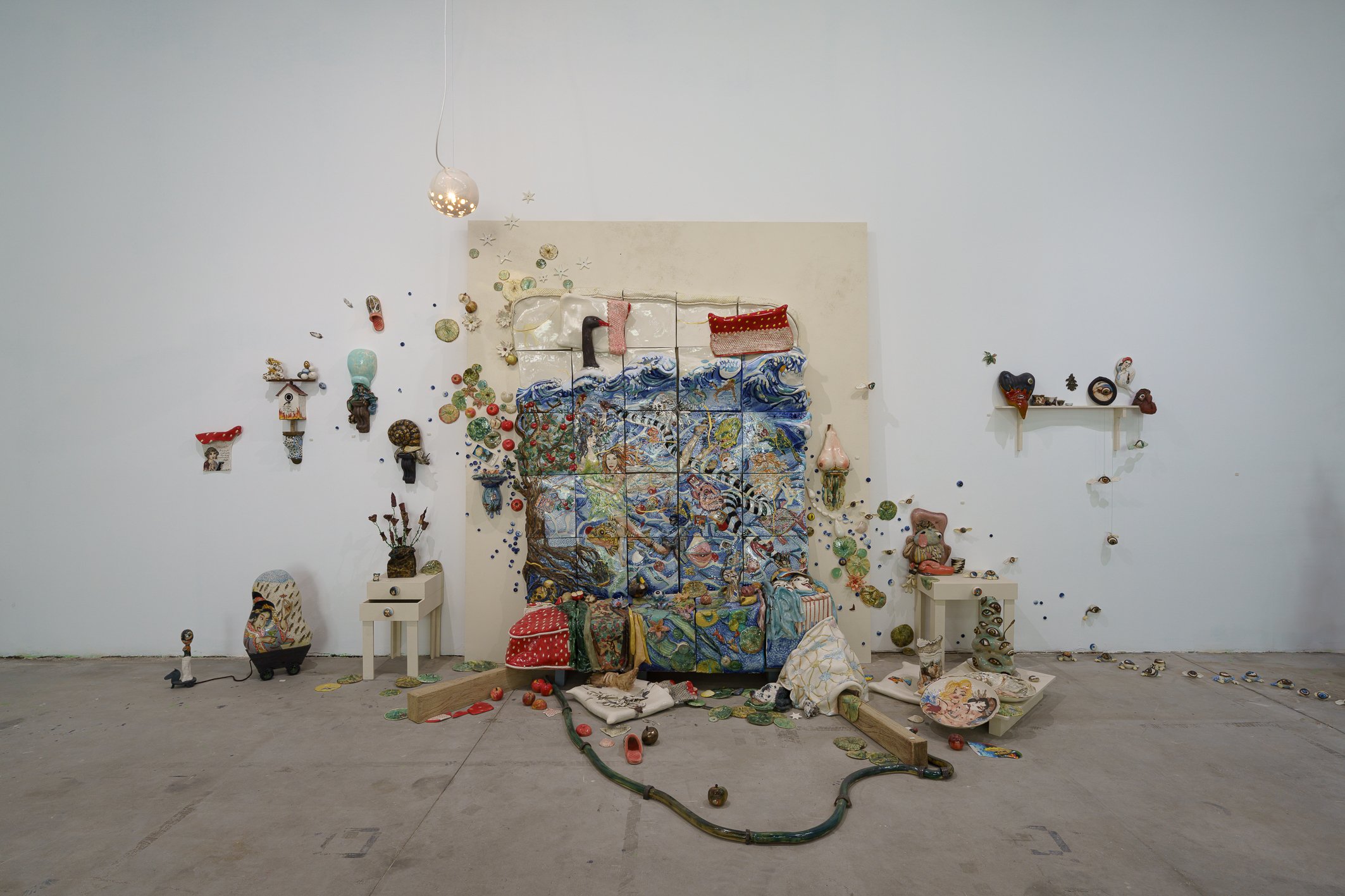


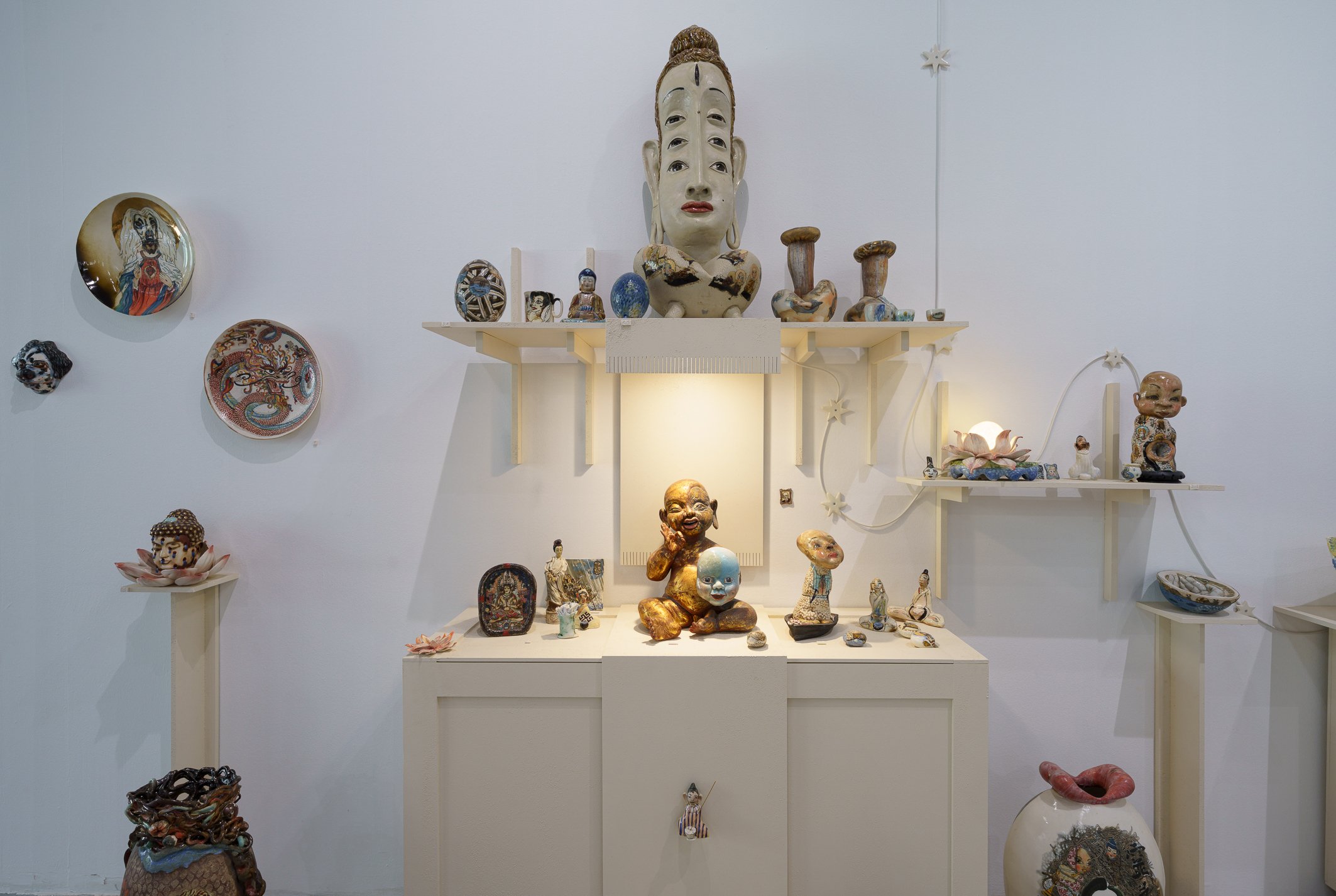
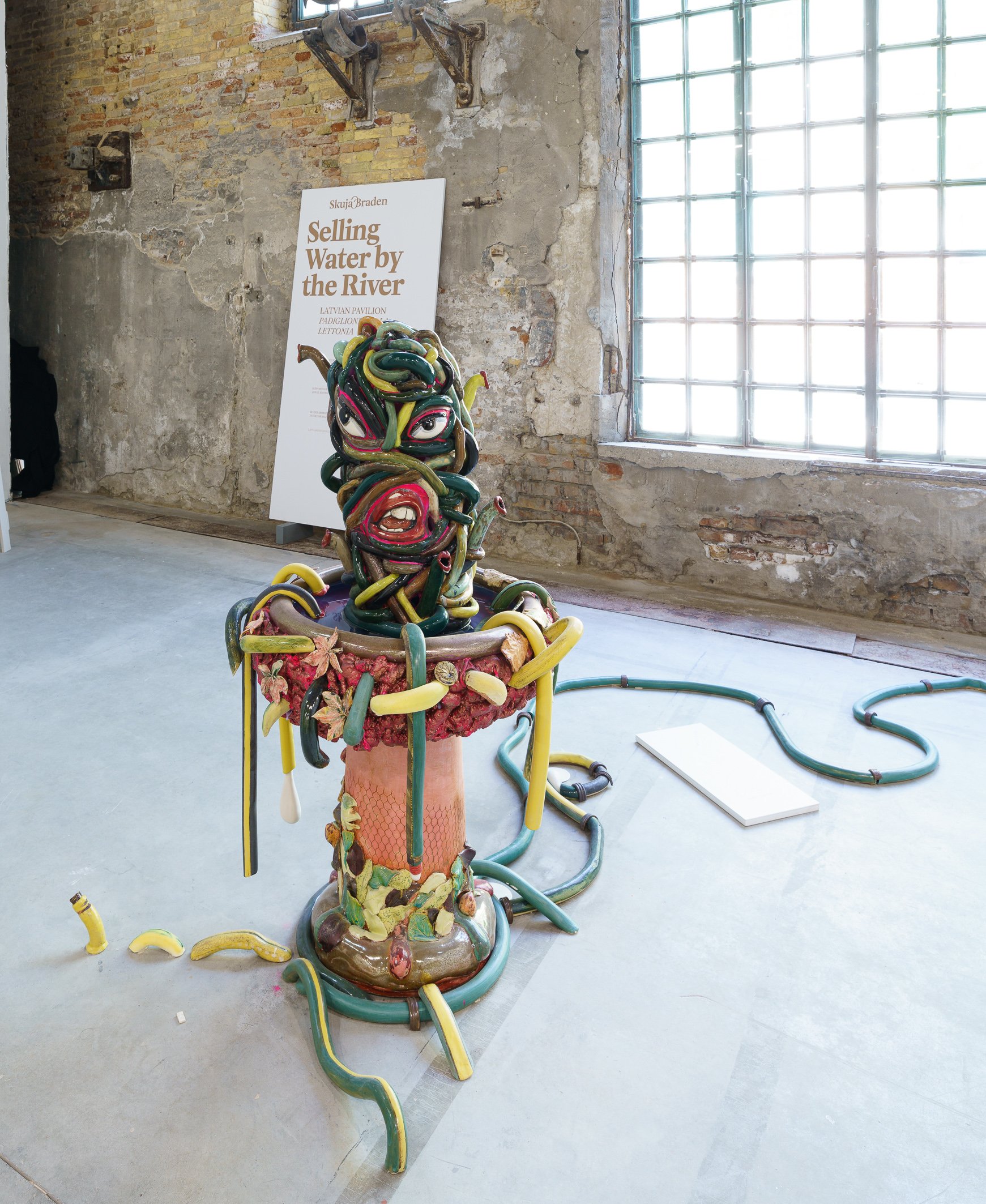
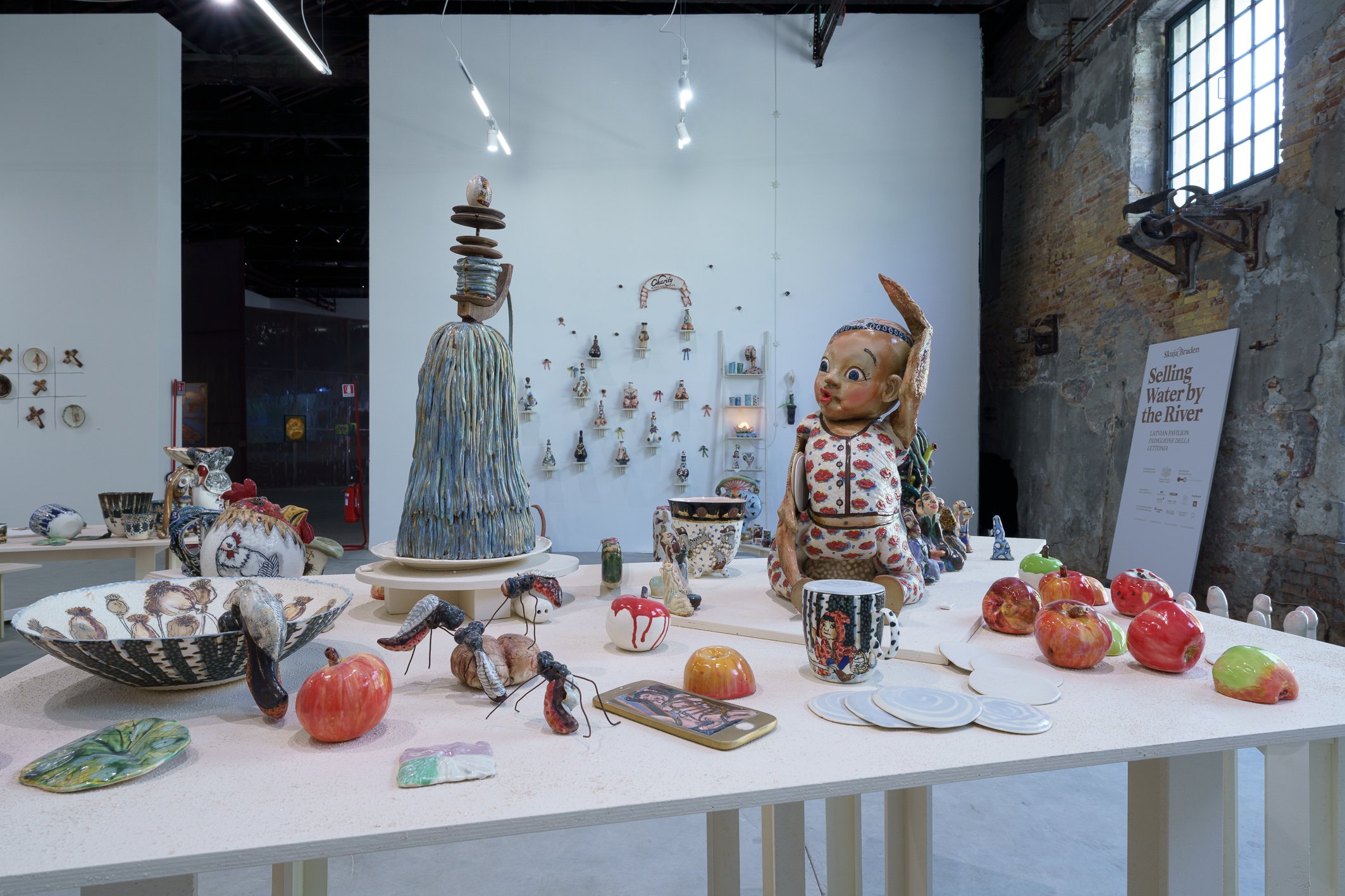
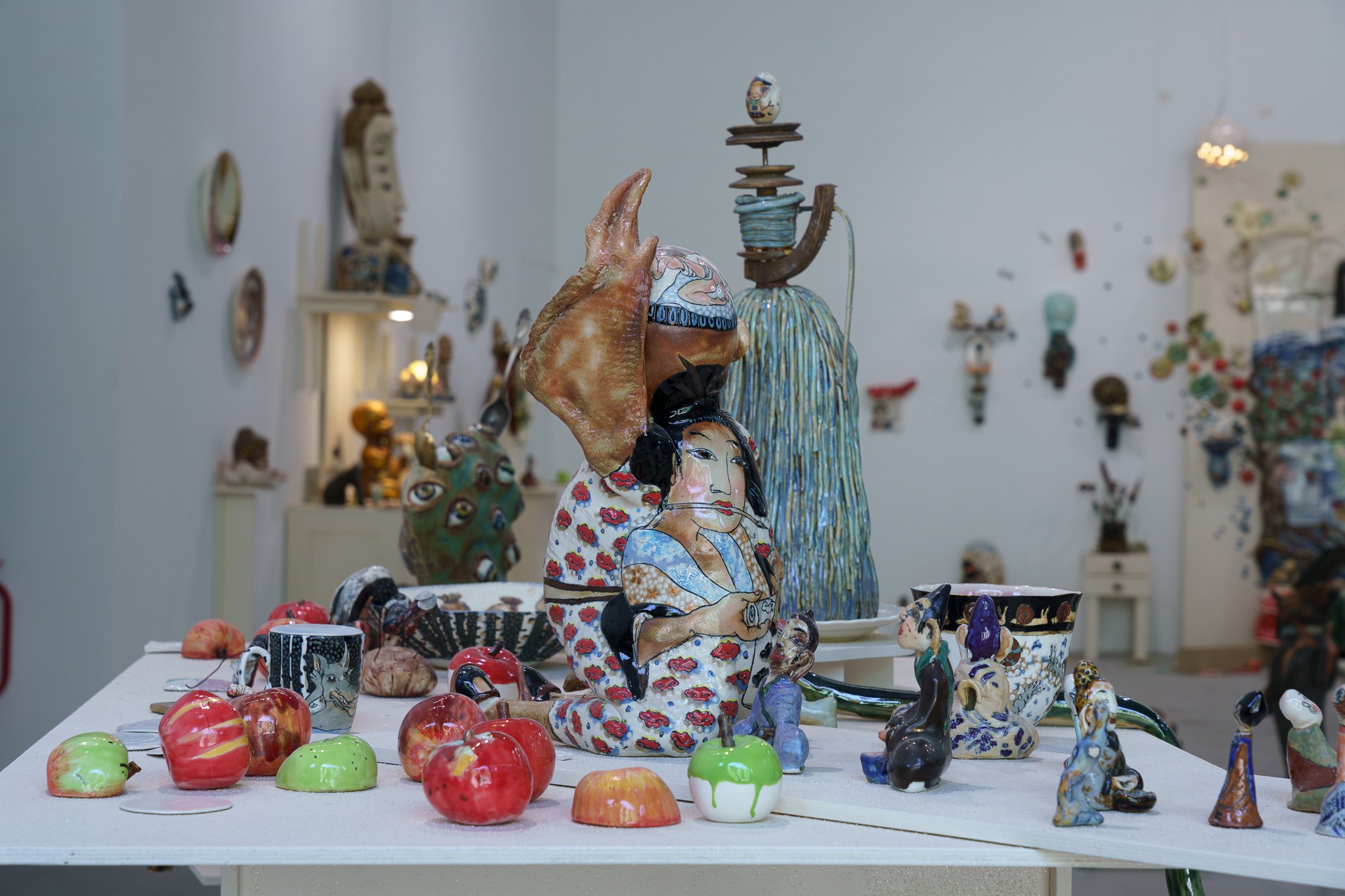
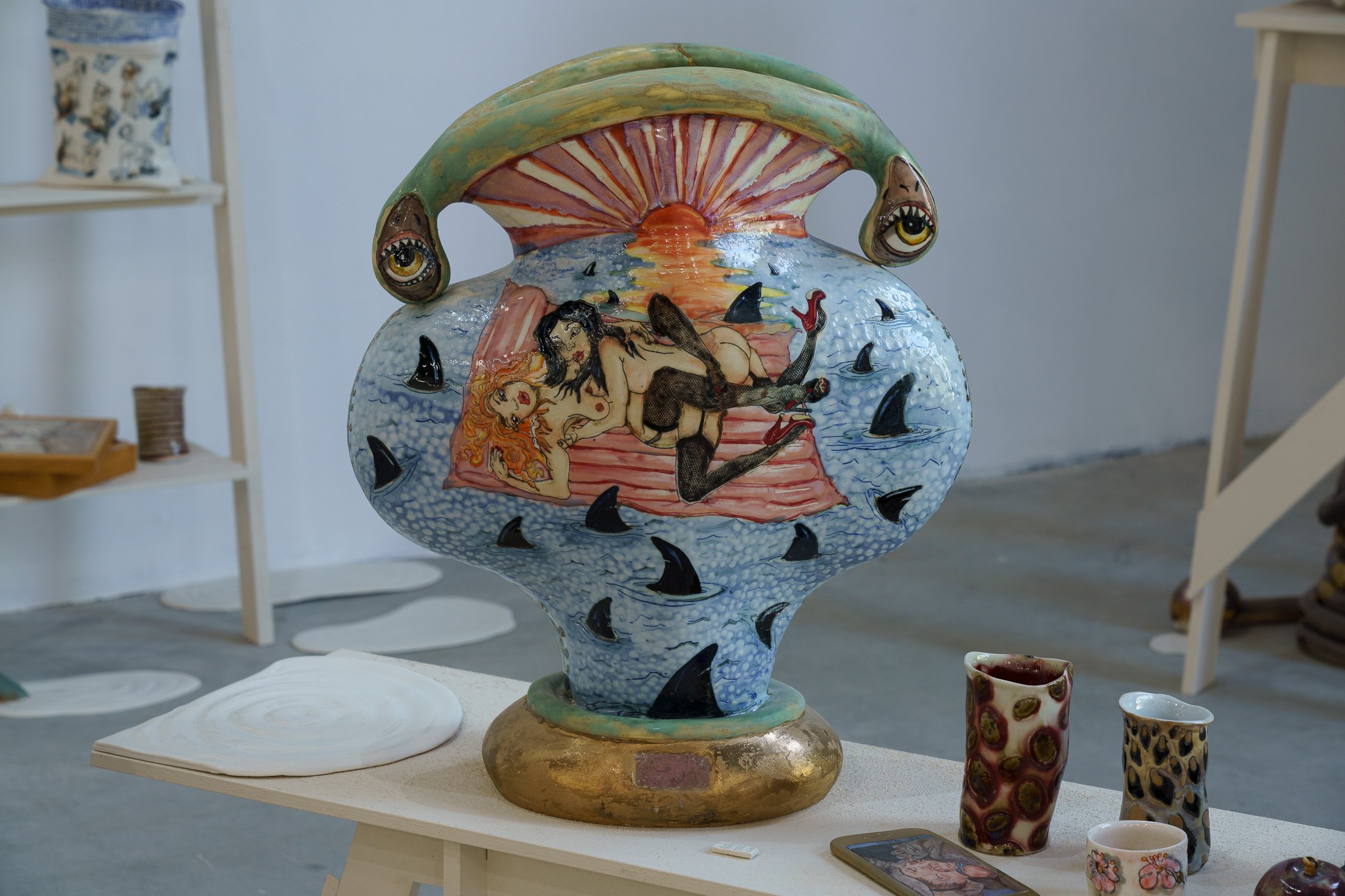
”Perhaps home is not a place but simply an irrevocable condition,” wrote James Baldwin, as if to echo the idea, rooted in Zen Buddhism, of a ceaseless state of presence and enlightenment. It was a Japanese Zen master who had earlier written, “For forty years I've been selling water by the bank of a river. Ho, ho! My labours have been wholly without merit,” asking us to understand that we already have everything we need, that the river flows whether we want it to or not, and that we have to reach enlightenment on our own.
The 59th International Art Exhibition is open until Sunday 27 November 2022 at the Giardini and the Arsenale. Opening hours: from Tuesday to Sunday from 10 am to 6 pm. Extraordinary openings are scheduled on Monday 31 October and Monday 21 November.
In the cover:
Tsherin Sherpa, Muted expression
(https://nepalinvenice.com )
Photo credits:
The Milk of Dreams, Biennale catalogue: http://ftp.labiennale.org, design by Formafantasma
Lita Albuquerque, Liquid Light, Film with sound, 27 min https://www.labiennale.org, photo by David McFarland
Poland Pavilion, Biennale catalogue: http://ftp.labiennale.org, photo by Marco Cappelletti
USA Pavilion, Biennale catalogue: http://ftp.labiennale.org, photo by Marco Cappelletti
Hong Kong Pavilion, Biennale catalogue : http://ftp.labiennale.org, photo by Ka Lam
Latvia Pavilion, Biennale catalogue: http://ftp.labiennale.org, photos by Andrea Avezzù





